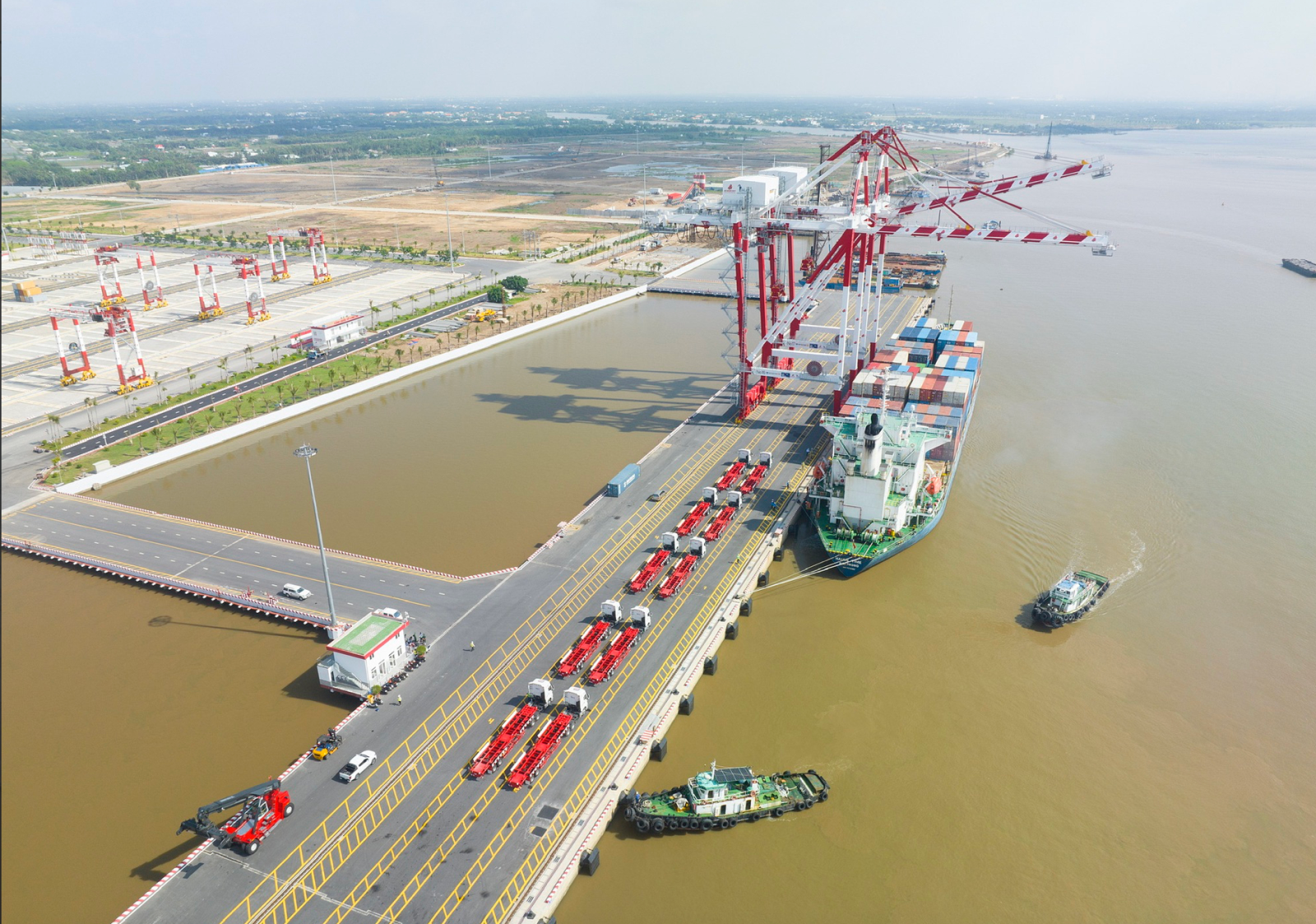More than 3,700 billion VND needed to invest in Long An seaport system
Posted on: 13/06/2025
Planning 8 ports
According to the draft planning, Long An seaport includes two wharf areas: Can Giuoc and Vam Co.
The target by 2030 is that the regional seaport will have a cargo throughput of 13.3 million to 18.3 million tons (of which container cargo is from 0.35 million TEU to 0.43 million TEU). The seaport has 8 wharves, including 17 - 20 wharfs with a total length of 3,586 m to 4,028 m (excluding other wharves).

Long An seaport consists of two wharf areas: Can Giuoc and Vam Co (Illustrative photo).
By 2050, Long An seaport will meet the volume of goods passing through with an average growth rate of 3.5%/year to 3.8%/year. During this period, investment in ports that directly serve industrial, service and factory facilities in Can Giuoc and Vam Co port areas will be completed.
Total land use demand according to the planning until 2030 is about 376 hectares (not including areas for developing industrial parks, logistics, etc. associated with the port). Total water surface demand is about 3,243 hectares (including other water areas within the management scope without maritime works).
The capital investment demand for the seaport system by 2030 is about VND 3,710 billion, including investment capital for public maritime infrastructure of about VND 500 billion and investment capital demand for ports of about VND 3,210 billion (including only ports providing cargo handling services).
Infrastructure serving maritime safety assurance such as anchorage areas, storm shelters, and facilities serving specialized state management tasks will be prioritized for investment, alongside Can Giuoc LNG port serving the Long An LNG Power Plant.
Port output reaches less than half of plan
Statistics show that in 2024, the cargo throughput of Long An seaport will reach 1.9 million tons. This result only reaches 23% to 24% compared to the forecast until 2020 in the Detailed Planning of the Southeast Seaport Group (Group 5) for the period up to 2020, with a vision to 2030. Of which, the cargo throughput of Long An seaport in 2020 is determined to be about 8 to 8.3 million tons/year.
Currently, Long An seaport has received the largest ship with a capacity of 70,000 tons, offloaded at Long An international port (Can Giuoc wharf area). The regional seaport has 10 wharves with a total length of about 2,116 m.
In the period 2020-2024, the number of seagoing vessels will grow by 40.4% in number of vessels and 61.6% in total tonnage (GT).
Infrastructure connecting to the port in the area has a road network connecting Long An seaport with provinces and cities in the region including National Highway 50; provincial roads DT830 (through Can Giuoc port area) and DT826B (through Vam Co port area).
Meanwhile, waterway traffic connecting Long An seaport has 6 main routes including Saigon - Ca Mau route (via Xa No canal); Saigon - Kien Luong route (via Lap Vo canal); Saigon - Ben Keo route (Vam Co Dong river); Saigon - Moc Hoa route (Vam Co Tay river); Saigon - Kien Luong route (via Thap Muoi canal No. 1) and Saigon - Ha Tien route (via Thap Muoi canal No. 2).
According to the Vietnam Maritime Administration, in recent times, solutions to improve the efficiency of exploiting seaport infrastructure in the region have been well promoted. Long An international port has been invested in, built and announced to put into operation 7 wharves with a total length of 1,670 m, receiving ships with a tonnage of up to 70,000 tons with reduced load.
Thereby, actively contributing to attracting cargo loading and unloading in Long An area, increasing the ability to receive increasingly large tonnage ships and gradually forming long-distance shipping routes.
However, the progress of infrastructure development of industrial parks after the port is still slow (Southeast Asia Industrial Park, Phuoc Dong Industrial Park, Tan Lap Industrial Park,...), slow implementation of Long An Power Center Port due to adjustment of the construction progress of the factory according to Power Plan VIII, causing the volume of goods passing through the seaport to be low.
Not to mention, the shipping channel standards have not met the actual needs. At the mouth of the Soai Rap River, there is a large amount of natural sediment, while the maintenance dredging work has not met the requirements and there is a lack of locations to receive dredged materials, which affects the overall construction progress and port exploitation efficiency.
One of the reasons why the development of Long An seaport has not been as expected is that the newly invested ports have not attracted many shipping lines and maritime agents, and are competing with seaports in Hiep Phuoc and Cat Lai wharf areas of Ho Chi Minh City seaport.
At the same time, most of the province's industrial parks are adjacent to Ho Chi Minh City, so goods tend to be transported to Ho Chi Minh City instead of to Long An international port.